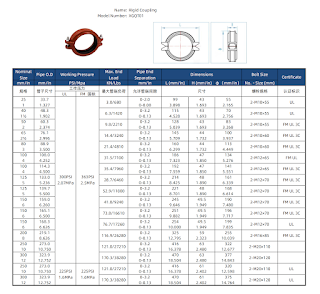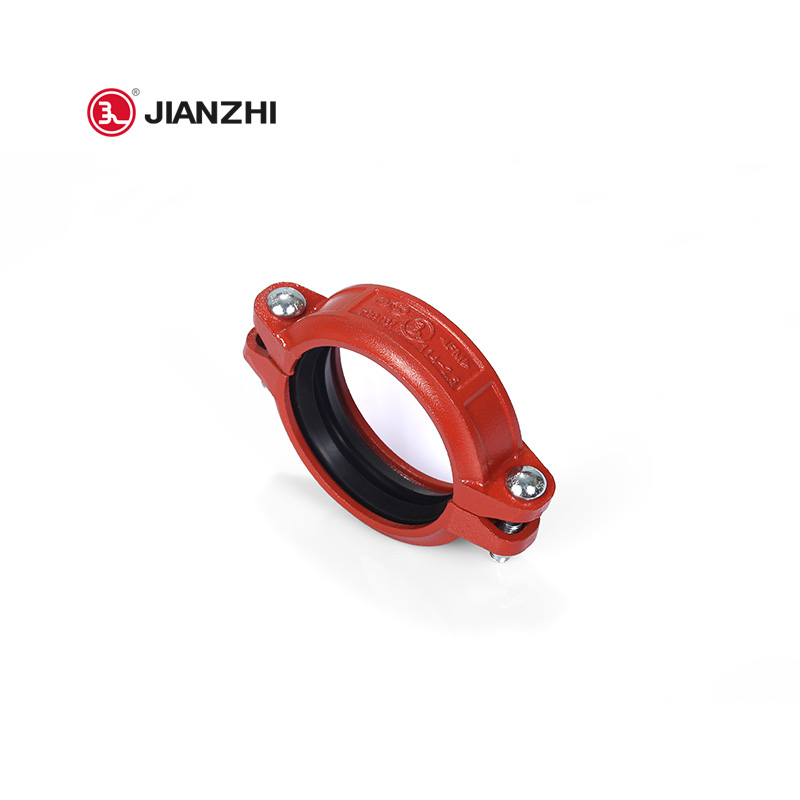For more than 85 years, trench mechanical piping has been changing the way contractors do business, but this method of piping connection is still unknown or misunderstood in some areas of the commercial construction industry. Many other methods of duct connection exist for mechanical duct systems, particularly in HVAC and plumbing applications. Some contractors may not realise the opportunities that trench mechanical piping offers in terms of increased profitability, compressed schedules and site safety.
What is a grooved pipe joint?
A grooved pipe joint consists of four elements
Slotted pipe
Gasket
Coupling housing
Nut and bolt.
The tube grooves can be cold formed or machined to shape. A washer surrounded by the coupling housing is wound around both tube ends and the coupling housing key section engages the groove. The bolts and nuts of the coupling are tightened with a socket spanner or impact spanner. In the installed condition, the mechanical coupling housing encases the gasket and engages the groove around the circumference of the pipe to create a leak-proof seal in the self-restraining pipe coupling.
The first five benefits of grooved pipe couplings
1. A safer workplace
The benefits of grooved pipe couplings include not only quick and easy installation, but also greater safety than any other method of pipe joining. The grooved mechanical coupling system can be installed without flames, eliminating the fire hazards normally associated with soldering/coppering or soft soldering. Welding is one of the most dangerous industrial activities; its hazards include the risk of fire, electric shock, compressed gases and toxic fumes. Welding therefore requires personal protection of the eyes, hands, feet and body. Welding activities also require fire surveillance during and after work, which slows down the construction process and increases costs.
The safety of installers on the construction site is of paramount importance; however, this becomes even more important in extension and/or renovation projects where buildings such as hospitals and schools may remain open and operational during construction. The benefits of slotted mechanical couplings can reduce the risk to workers and building tenants in the above projects. In a comparison of safety with welding (one of the most dangerous industrial activities), the grooved pipe connection method is undoubtedly the winner.
2. Adapting to the expansion and contraction of the piping system
The grooved pipe connection method conforms to industry practice when adapting to the thermal expansion and contraction of the pipework system. At the same time, it offers design flexibility, reduces the stress on mechanical piping systems and provides a more compact, easily inspected and efficient method of installation than other piping connection methods.
Due to the design of its components, the slotted mechanical coupling allows for pipe movement. The dimensions of the pipe coupling housing key are narrower than the pipe groove, leaving room for the pipe coupling housing key to move in the pipe groove. In addition, the width of the pipe coupling housing allows the pipe ends to separate, which in turn allows the slotted pipe coupling to accommodate linear and angular movements. The mechanical coupling provides a self-restraining joint and the unique pressure-responsive design of the pipe coupling provides a reliable seal even in the event of deflection and linear pipe movement.
3. Reduced downtime
Avoiding disruption to building occupants while minimising cost overruns associated with night and weekend work can be a challenge in retrofit projects. Grooved mechanical pipe connection systems can solve these problems as a reliable alternative to welding and flanging. The widely accepted flameless technology is quick and easy to install and maintain, providing compatibility between new system designs and existing systems.
In many cases, existing pipework can be rearranged and kept running while work is carried out on an old system or a new system is installed. The recess system eliminates the need to completely shut down the system as there is no need to drain and dry the system and no arc or flame is required to remove or reassemble the joints. As a result, the building can be returned to full capacity very quickly. The benefit of grooving in this case is simple: downtime is avoided. To access a pipework system connected to a grooved component, the worker only needs to disassemble two joints to remove a pipe section. To complete the job, the grooved fitting is easily put back on the pipe and the nut tightened.
4. Lower total installation costs
Although upfront material costs may be higher than welding, the benefits of beveling are reduced labour time and labour costs. Based on the elimination of welding, and the need for highly skilled and relatively expensive labour, the assembly of mechanically coupled systems reduces labour hours as well as labour rates. This contributes to an overall reduction in the cost of the pipe system, i.e. the total installed cost.
5. Easy and quick to install
Mechanical piping with grooves can be installed faster than any other piping connection method, as only the gasket and fitting housing need to be positioned onto the end of the grooved pipe. The bolts and nuts are tightened with standard hand tools. After installation, most systems with grooves can be visually inspected. Metal-to-metal bolt holder contact confirms that the tube fitting has been correctly installed and secured in place. Welding, on the other hand, usually requires X-ray inspection to ensure that the joint is intact. The advantages of grooved pipe joints are the ease of installation and the speed savings.
It is easy to see the benefits of the trench pipe system and how it is fast becoming the standard on commercial construction sites. With the ability to improve jobsite safety, speed and simplify installation, reduce total installed costs and simplify maintenance and expansion, grooved mechanical piping will long have a place in contractors' toolkits. When you add engineering benefits to the mix - versatility in design; adaptation to thermal expansion and contraction, deformation and seismic movement; and noise and vibration reduction - grooved piping stands alone.




没有评论:
发表评论